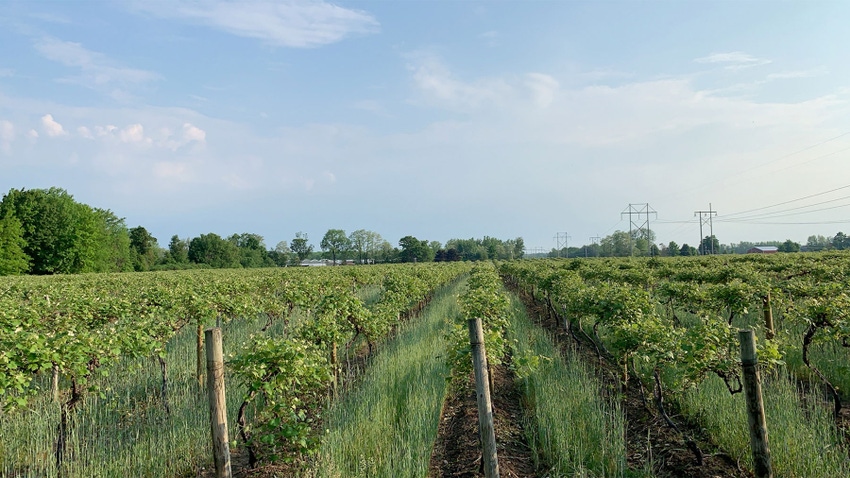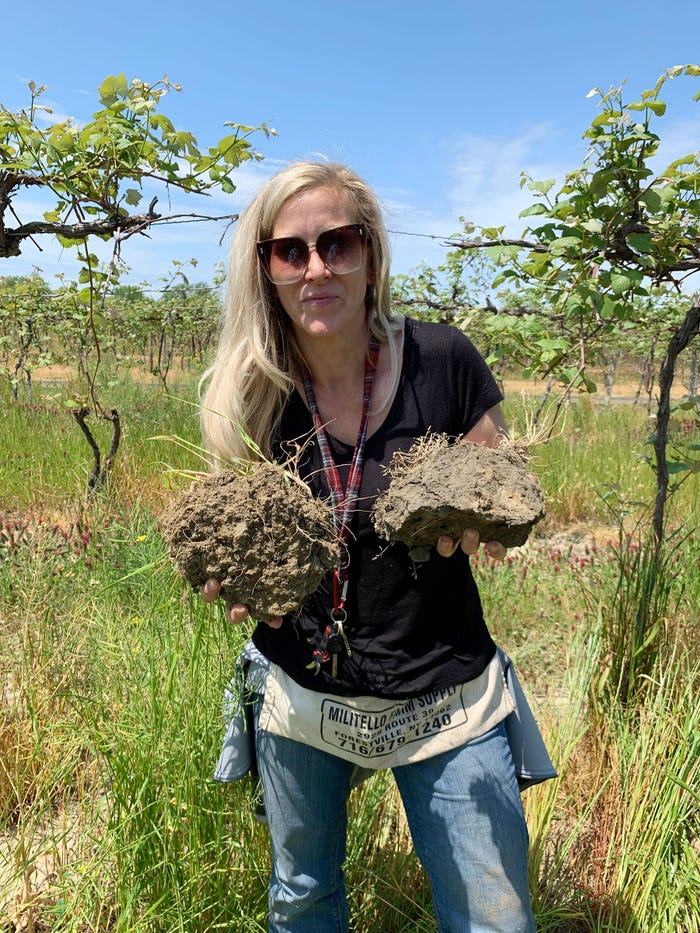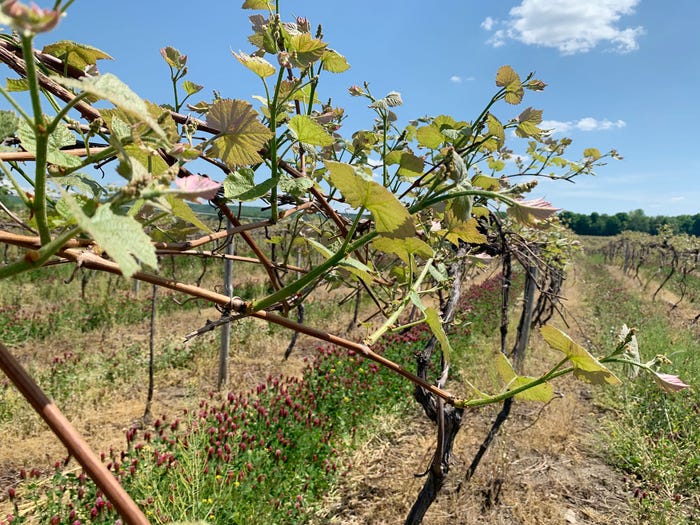March 13, 2024

How can cover crops best benefit Concord grape production in the second-largest grape growing region in the U.S.?
Jennifer Phillips Russo, viticulture Extension specialist and team leader of Cornell Extension’s Lake Erie Regional Grape Program, wants to answer that question.
Concord grapes are grown for fresh fruit, juice, jam and for fermenting on most of the 31,500 acres of vineyards along the New York-Pennsylvania lake shoreline. Phillips Russo is working to identify vineyard floor management strategies that help balance soil health, grapevine productivity and vineyard profitability. Her work is funded in part by a grant from the New York Farm Viability Institute.
The trials, led by Phillips Russo, of single and cover crop mixes show promise for increasing the vigor of small and medium vines. The combination of an annual ryegrass and tillable radish mix with clover increased the size of smaller vines anywhere from 10% to 30%. For weed suppression, a mix of 15 pounds annual rye and no more than 1 pound of tillage radish almost fully suppressed marestail.

HEALTHY, UNHEALTHY: Viticulture specialist Jennifer Phillips Russo holds two soil samples. On the left is a healthy clod of soil planted with multispecies cover crops. On the right is a compacted clod that was not planted with cover crops in the same trial vineyard.
Additionally, the trials show that, with proper management, cover crops could be successfully used on heavy clay soils with vine weight increasing from a half-pound to 1¼ pounds. An economic analysis showed that using cover crops on heavy clay soils increased gross revenue per acre by $225 with an investment of between $40 and $50. The researchers cautioned that additional field trials were needed to show if this was just a one-time increase or a more permanent opportunity.
Many growers were not using cover crops for middle row management at the time of these early trials and during a season of significant drought. But the research provides new data on the ability to push middle row termination up to bud break with 6 inches of shoot growth rather than at bloom, and on heavy clay up to 8-10 inches.
An 11-minute video about this research is posted at youtube.com.
Here’s a list of cover crops and their potential benefits in a vineyard from a project done in 2016-17:
Buckwheat. Extracts soil phosphorus, attracts pollinators and suppresses weeds.
Crimson clover. Fixes nitrogen, suppresses weeds and protects soil from erosion.
Prairie grass. Protects soil from erosion, suppresses weeds and adds organic matter.
Ryegrass. Increases percolation, reduces erosion and reduces compaction.
Sunflower mix. Attracts beneficial insects, suppresses weeds and increases soil’s water-holding capacity.
Sweetpea. Fixes nitrogen, is tolerant of cold temperatures and is water efficient.
Tillage radish. Controls erosion and suppresses weeds, and its roots create deep channels for water to move through soil and be more accessible.
Wildflower mix. Attracts beneficial insects, suppresses weeds and adds organic matter.
Dutch clover. Produces nitrogen, has dense or shallow roots to prevent soil erosion and stands up to heavy traffic.
Wild mustard. Helps manage soilborne pathogens, suppresses weeds and generally winter kills.
Oats. Adds biomass, suppresses weeds and scavenges excess nutrients.
June field day in the works
With new funding from the New York Farm Viability Institute, the two-year project is evaluating floor management strategies for nutrient and water conservation in nonirrigated Concord vineyards.
This work is looking at cover cropping and different methods of termination and timing on gravel and heavy clay soil types. The objective is to develop management options to balance soil health, vine capacity and economic sustainability by maximizing soil cover and vegetative growth during periods of adequate soil moisture, and to minimize vine competition during the dry summer months. Trial locations were successfully established in 2023.

CRIMSON CLOVER: Crimson clover was part of this vineyard cover crop mix. Crimson clover can fix nitrogen, suppress weeds and can protect soil from erosion.
The Lake Erie Regional Grape Program is collaborating with Cornell’s Soil Health Alliance and the Natural Resources Conservation Service to put on a soil health field day June 12 in western New York. For more details and to register, visit lergp.cce.cornell.edu. You can also contact Jennifer Phillips Russo at [email protected] or call 716-792-2800.
Dunn writes from her farm in Mannsville, N.Y.
About the Author(s)
You May Also Like




